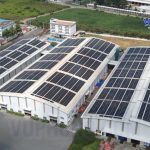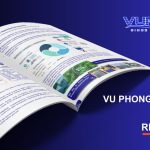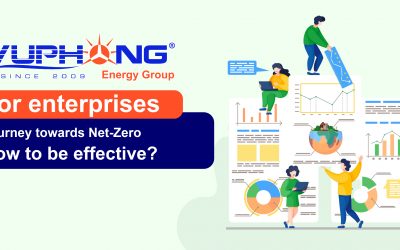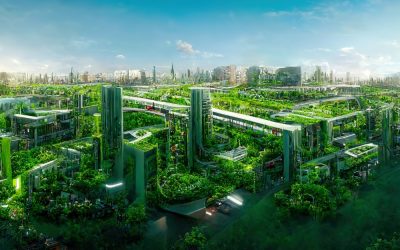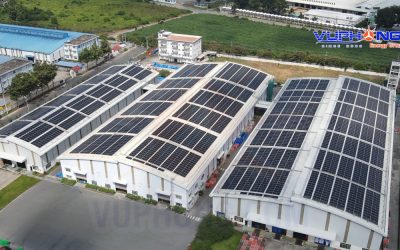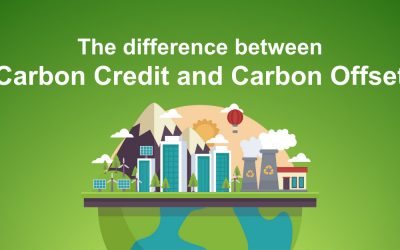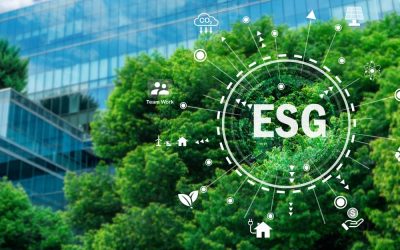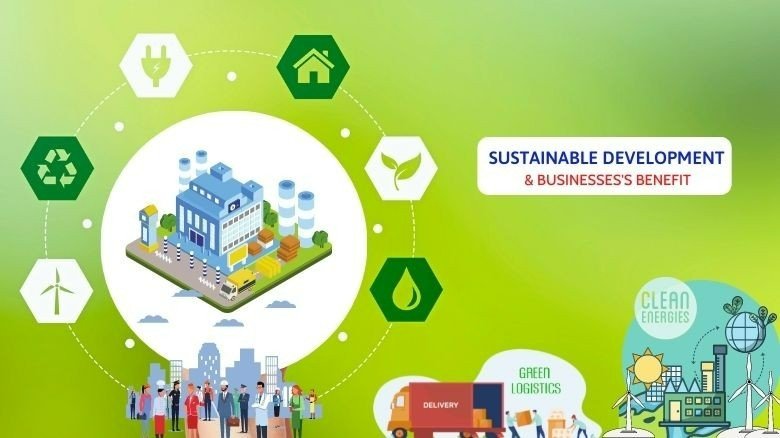
A sustainable development strategy has a considerable influence, representing social responsibility and being a decisive factor in a company’s success and sustainability.
Building and carrying out a sustainable development strategy will assist businesses in creating long-term value, managing risks efficiently, adapting flexibly, enhancing efficiency and resource conservation, and improving brand image and consumer goodwill. This helps businesses gain a competitive advantage in the market and positively contribute to the community and social environment.
What is sustainable business development?
What is meant by sustainable business development?
Sustainable development is defined as development that meets the requirements of the current generation without compromising future generations to meet those needs and is based on a tight and harmonious mix of economic growth, social problem-solving, and environmental protection.
In this general concept, sustainable business development is a principle, a strategy businesses set and implement to ensure a balance between economic interests and social and environmental issues. Businesses must build operational procedures and management strategies to protect resources, workers’ interests, and other factors.
Therefore, sustainable business development is evaluated based on three aspects: clean and efficient production processes, environmentally friendly products, and fulfilling social responsibilities.
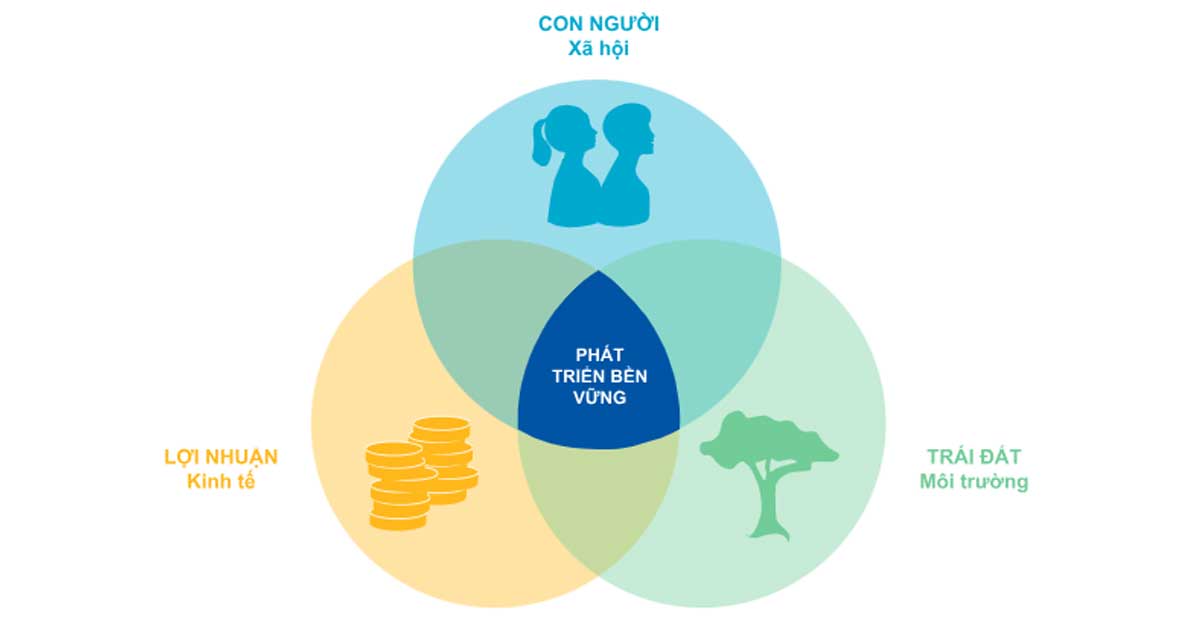
Benefits of Sustainable Development Strategy for Businesses
A sustainable development strategy assists businesses in building a solid foundation for long-term value creation. It also lets businesses identify and manage risks better, build flexible and sustainable business models, and adopt effective management systems to cope with changes as they run and develop.
Businesses may optimize consumption and reduce waste resources by implementing a sustainable development strategy. Businesses may enhance production efficiency, reduce environmental impact, and save costs by implementing energy-saving measures and utilizing natural resources and materials effectively. This also helps enhance market competitiveness and brings both short-term and long-term economic benefits. Furthermore, adhering to sustainable standards and regulations assists businesses in gaining a positive perception from customers, employees, and the community, which leads to increased sales and expanded potential markets.
A sustainable development strategy also makes businesses more adaptable to rapidly changing market trends, such as consumer preferences. By investing in R&D, innovation, and continuous learning, businesses can generate value, maintain competitiveness, and expand the market potential.
Principles of Sustainable Development
Sustainable development for businesses, involves operating across three dimensions of development: sustainable economic growth, social prosperity, fairness, stability, cultural diversity, and a healthy environment with sustained resources.
There are three aspects of sustainable development that businesses must pay special attention to:
- Pollution prevention: Businesses prevent pollution by minimizing or eliminating waste before it is generated rather than dealing with waste after it is produced. To reduce waste and energy consumption, this strategy is implemented through continuous improvement.
- Lifecycle product management focuses on minimizing pollution over a product’s whole lifecycle, not only during manufacturing.
- Clean technologies: The focus is on developing and utilizing environmentally friendly and green technology.
Therefore, when aiming for sustainable development, businesses should first conserve input resources (raw materials, energy) and limit various types of waste. To achieve this, businesses must synchronize production, distribution, processing, and product recycling to minimize resource consumption and negative environmental impacts. Considering all stages of the product lifecycle should be a priority from the beginning, while also focusing on implementing clean production technologies to minimize the environmental effects.
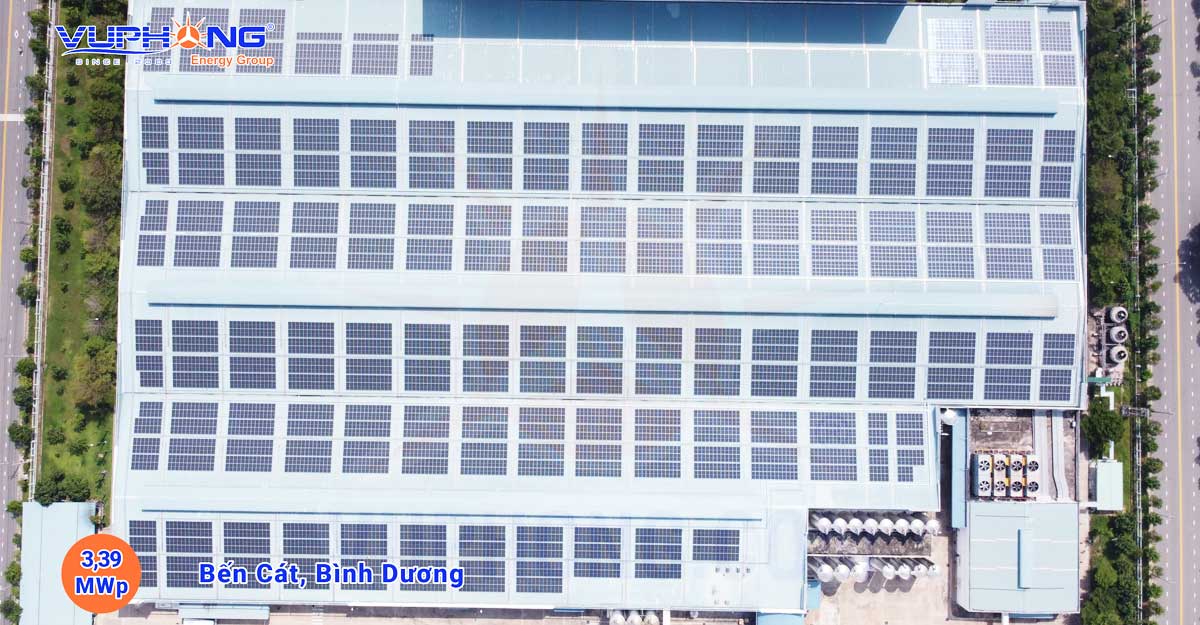
Building a Sustainable Development Strategy for Businesses
ESG (Environmental, Social, and Governance) is a framework that assists businesses in effectively planning and implementing sustainable development strategies. ESG guides businesses on how to manage risks and seize on development opportunities in three key aspects:
- Environment: During business operations, this aspect focuses on energy sources, resources, and waste management.
- Social: diversity, fairness, safety, security, business relationships, and community involvement.
- Governance: Management processes, incentive mechanisms, and diversity on the Board of Directors make effective decisions.
Five steps to help businesses build and implement an effective ESG strategy:
Depending on the industry, scale, and objectives, each business will have a suitable plan and pace for developing and implementing an effective ESG strategy. The 5-step process outlined below provides a foundation for businesses to build and practice ESG more effectively.
- Define the vision, objectives, and current status: Firstly, businesses must clearly define their sustainable vision and objectives. This involves identifying critical environmental and social issues relating to their industry and establishing specific targets for addressing them (for example, reducing emissions, increasing the use of renewable energy, and ensuring a fair supply chain…). Businesses must also assess their financial status, human resources, market position,… and study the potential impact of implementing ESG principles.
- Establish a strategy framework: Businesses produce ideas and establish a strategic framework based on the three pillars of ESG (environmental, social, and governance). Setting key performance indicators and criteria for monitoring progress and assessing impact, such as measuring energy consumption, carbon emissions, and recycling rates,… is part of this. Businesses can then develop smart and efficient resource management plans to minimize waste and maximize value. Advanced technology and manufacturing processes can reduce waste, water consumption, and energy consumption. Businesses should also plan for supply chains and collaborate with partners to enhance efficiency and reduce environmental impact. Businesses can practice effective, sustainable development while developing new business opportunities and enhancing the brand image via sustainable partnerships.
- Building a transition roadmap facilitates the smooth implementation and efficient coordination and adaptation among personnel.
- Implement sustainable development: Before implementation, businesses should reassess the factors that need to change and involve the appropriate personnel to ensure progress and success rates. Businesses should continuously promote internal communication throughout implementing sustainable development solutions by the established roadmap to ensure that employees clearly understand and are motivated for truly sustainable development.
- Evaluate, report, and optimize: Businesses must regularly monitor and evaluate the sustainable development strategy to ensure its effectiveness. This helps identify strengths and weaknesses, increase efficiency, and optimize performance. Tracking progress toward sustainable goals, environmental assessments, compliance checks, customer surveys, and so on are all examples of evaluation tools and methods. Finally, businesses should report ESG data to relevant organizations and the community, demonstrating their commitment to sustainable development to customers, partners, and shareholders.
Importantly, a business cannot achieve sustainable development on their own; but require strong collaboration and integration throughout the supply chain. As a result, many experts believe that each business must take even stronger action and collaborate in order to jointly develop sustainability and contribute to sustainable development alongside the community.
Vu Phong Energy Group


